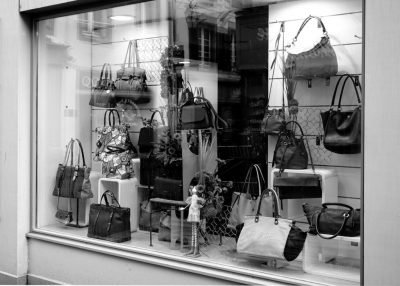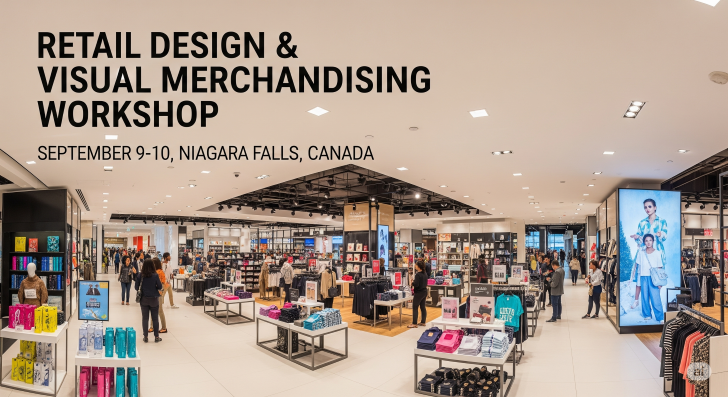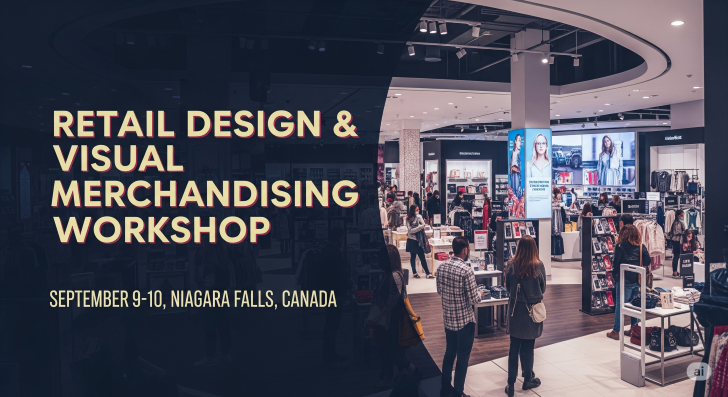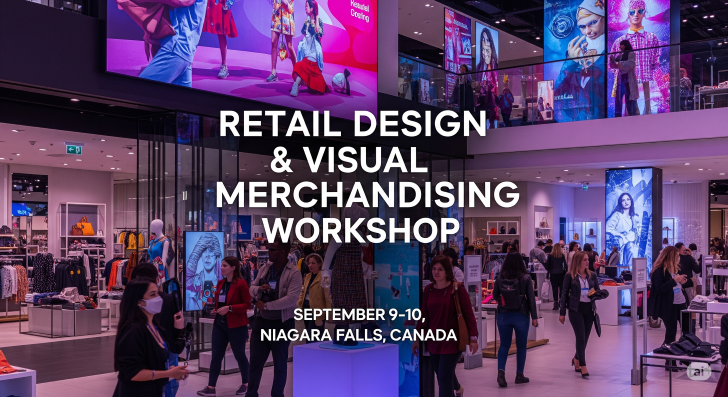
Cutting-Edge Techniques and Under-the-Radar Opportunities with Master-Level Skills in Visual Merchandising
In the evolving landscape of retail, visual merchandising has transformed from a decorative function into a sophisticated science.
Today’s top-performing merchandisers don’t just build beautiful displays—they strategically design environments that influence behavior, tell brand stories, and drive measurable results.
This post reveals the cutting-edge techniques, under-the-radar opportunities, and master-level skills that set elite visual merchandisers apart from the rest.
If you want to elevate your visual merchandising beyond traditional methods and uncover hidden levers for growth, read on.
These high-level strategies blend design, psychology, and data to create powerful in-store experiences.
Cutting-Edge Technique: Modular Merchandising for Agility
Agility is the new competitive advantage.
The most advanced visual merchandisers are moving away from fixed displays in favor of modular merchandising—reconfigurable shelving, movable walls, and portable fixtures that adapt quickly to trends, customer flows, and inventory shifts.
Master-Level Skill:
Experts use modular systems to test and iterate in real-time.
If a layout isn’t performing, they rearrange on the fly, swapping product focal points and adjusting traffic pathways to optimize flow.
Under-the-Radar Opportunity:
Modular setups also reduce visual fatigue.
When customers notice that a space looks different each week, they’re more likely to return frequently to explore what’s new.
Cutting-Edge Technique: Dynamic Lighting Zones
Advanced lighting goes far beyond visibility.
Master merchandisers craft lighting schemes with zones of warmth, contrast, and shadow to emphasize certain products, direct traffic, and create mood.
Master-Level Skill:
Professionals layer ambient lighting with adjustable accent lights to frame focal products.
They understand how lighting color temperatures affect emotional tone—warm lights create intimacy, while cooler tones suggest efficiency and modernity.
Under-the-Radar Opportunity:
Dynamic lighting also allows retailers to adjust ambiance based on time of day, event, or foot traffic.
For example, soft, calming light in the morning encourages relaxed browsing, while brighter tones in the afternoon promote quick decisions and impulse purchases.
Cutting-Edge Technique: Data-Driven Display Mapping
The best merchandisers no longer rely on intuition alone.
They integrate real-time data into planogram design, using customer behavior insights, POS performance, and heatmapping technology to decide where and how to position products.
Master-Level Skill:
Using data to inform display refresh schedules, traffic-flow design, and product prominence is now a key part of the visual merchandising toolkit.
Top merchandisers treat displays like A/B test subjects, measuring impact and making continual improvements.
Under-the-Radar Opportunity:
Brands can use this approach to spotlight slow-moving items by repositioning them into high-engagement areas or pairing them with top sellers—resulting in increased conversion without markdowns.
Cutting-Edge Technique: Story-Based Display Layers
Beyond basic product categories, cutting-edge merchandisers use layered storytelling in their displays.
Instead of just showcasing a jacket, they build a full “look and lifestyle” around it—with accessories, props, backdrop visuals, and complementary textures.
Master-Level Skill:
Storytelling displays are crafted to evoke aspiration. They take into account customer personas, mood states, and seasonality to create emotional resonance.
Under-the-Radar Opportunity:
Micro-stories placed in underused spaces (e.g., near fitting rooms or restrooms) can surprise and delight customers, extending the brand narrative into unexpected areas.
Cutting-Edge Technique: Product Pacing Through Focal Points
Elite merchandisers understand how to pace customer exploration by inserting focal points at visual intervals.
This pacing keeps engagement high throughout the store and prevents cognitive overload.
Master-Level Skill:
Focal points are created with hierarchy—using height, lighting, contrast, or motion.
They act as visual “anchors” that break up space, give the eye somewhere to rest, and guide shoppers from zone to zone.
Under-the-Radar Opportunity:
Use “micro-focal points” in dead zones or overlooked corners to reactivate foot traffic and extend average dwell time.
Cutting-Edge Technique: Synesthetic Merchandising
Synesthetic merchandising involves integrating multiple senses—touch, sound, scent, and even taste—to support visual elements and enhance memory formation.
Master-Level Skill:
Top merchandisers craft sensory layers to match visual displays.
For instance, a lavender-scented display of spa products, paired with soft ambient music and plush textiles, creates a deeper immersive experience.
Under-the-Radar Opportunity:
These techniques can be subtle—such as pairing citrus scents with activewear or using textured flooring in luxury zones.
When done right, they increase engagement and improve brand recall.
Cutting-Edge Technique: Space Optimization Through Negative Space
Less is often more.
Master-level merchandisers understand the power of negative space—not filling every shelf, but allowing products to breathe and giving the eye time to absorb key visuals.
Master-Level Skill:
Space is used intentionally to highlight premium products, separate display stories, and signal sophistication.
Luxury brands have mastered this, but the principle works across price points when used thoughtfully.
Under-the-Radar Opportunity:
Create “moment zones” where shoppers can pause, interact, or share on social media.
These airy spots often perform better than jam-packed shelves in terms of dwell time and shareability.
Cutting-Edge Technique: Behavioral Merchandising Paths
Rather than designing based on product categories, advanced merchandisers map layouts based on how customers behave—factoring in shopper intentions, pace, and emotional state.
Master-Level Skill:
This includes creating fast tracks for quick visits, slow zones for immersive browsing, and buffer zones for decision-making.
Experts observe shopper flow and rearrange floor plans to match actual behavior—not idealized layouts.
Under-the-Radar Opportunity:
Use visual cues (floor textures, directional lighting, color shifts) to subconsciously nudge shoppers along intended paths, encouraging them to explore more of the store.
Cutting-Edge Technique: Digital and Physical Merch Fusion
Modern shoppers don’t distinguish between online and in-store.
Master-level visual merchandisers bridge the two seamlessly by integrating digital screens, QR codes, and interactive content directly into physical displays.
Master-Level Skill:
Using tech not just for novelty, but to extend the story—like playing a how-to video next to a product, showcasing influencer testimonials, or allowing customers to virtually try an item.
Under-the-Radar Opportunity:
Tie in-store displays to social campaigns.
For example, a display featuring products from your latest Instagram feature, complete with a branded hashtag and live content feed.
Visual Merchandising as a Strategic Discipline
Visual merchandising today is about more than aesthetics. It’s a strategic discipline that blends design, analytics, behavior, and storytelling.
By incorporating cutting-edge techniques, leveraging under-the-radar opportunities, and developing master-level skills, merchandisers can turn physical spaces into high-performing brand ecosystems.
To apply these ideas:
-
Start with modular tools to boost agility.
-
Use behavioral data to guide product placement.
-
Layer sensory elements to reinforce visual themes.
-
Treat displays like mini-campaigns that evolve over time.
-
Prioritize negative space and pacing to enhance flow.
-
Connect in-store merchandising with digital content for a unified experience.
In an era where customer expectations evolve faster than ever, those who innovate, iterate, and elevate their merchandising strategy will lead the retail renaissance.
Visual merchandising is no longer just what your store looks like—it’s what it feels like, how it behaves, and ultimately, how it performs.





